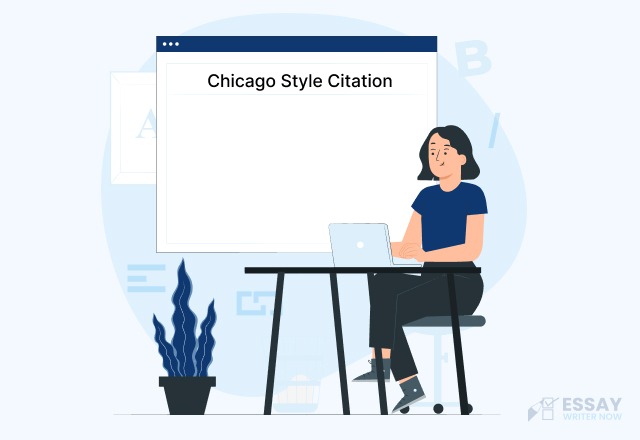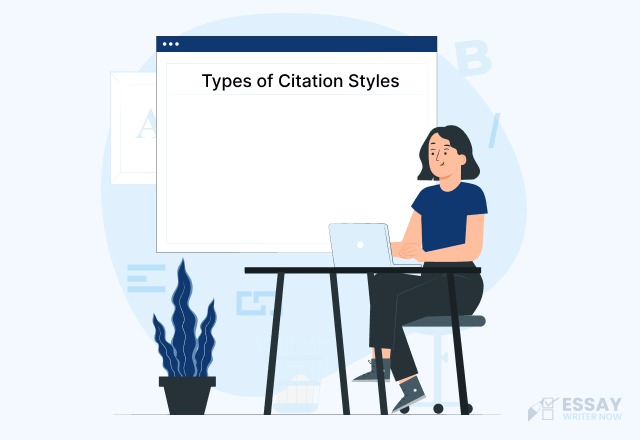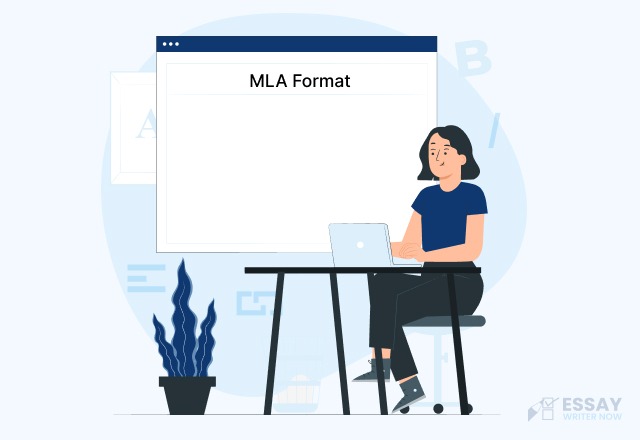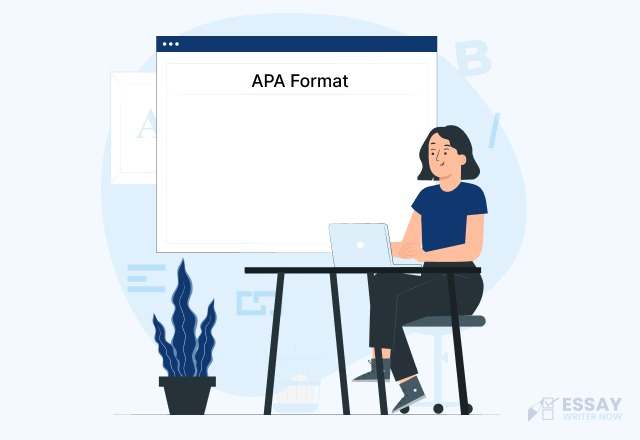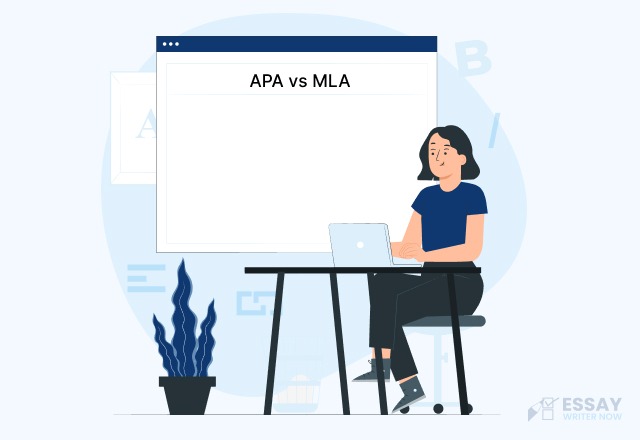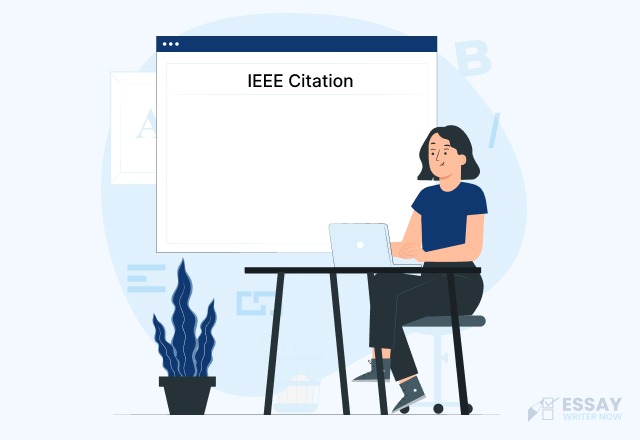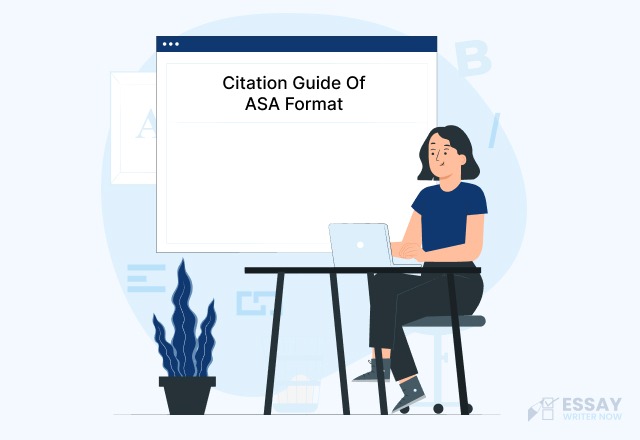What is the Chicago Style Citation?
The Chicago Manual of Style is an internationally-recognized citation style. This citation style is a must-have for any academic student who has to write research papers and publications.
It is widely used in the humanities. The most common types of Chicago citation is:
Notes and bibliography system: It is a more common Chicago style citation. The citations are placed in the footnotes or endnotes with the bibliography. The bibliography is organized in alphabetical order, so you can find all the sources easily.
Author-date: This type is also called the Harvard system, and it is used in natural and social sciences. This style citation uses parenthetical in-text citations followed by the reference list.
Chicago Style Format
In Chicago style, papers are typically formatted differently from APA or MLA. For your help, we compiled some information that you can use and format your paper accordingly.
Chicago Style Title Page
The Chicago-style paper does not need a title page, but it's worth putting in some extra effort if your teacher asks.
Below are some rules that will help you format the title page in Chicago style.
- Do not write the page number on the title page.
- Use 1-inch margins on all sides of the page.
- Use a readable font type and size.
- Use bold font for title and subtitles.
- Write the first name, last name, due date, and course number below the main title.
- Use double-space between sentences.
Formatting a title page is important because it's the first thing people see when they open your document.
Make sure you format correctly, so there are no errors in formatting, and give them an aesthetically pleasing look.
Chicago Style Heading
The Chicago Manual of Style is a great resource for formatting your papers. It has many recommendations on how to make headings and subheadings, but it does not prescribe an exact system as APA or MLA.
The following are some points that you will follow if you use the heading and subheading in your document.
- Use a bold and large font for the heading.
- Use the same format for all chapter headings.
- Use italics font for the subheading.
- Avoid ending subheadings with periods.
- Avoid underlining the heading and subheading.
- Subheadings should write on a new line.
You can't afford any mistakes when it comes to making a perfect and professional paper. Keep this in mind, and format the headings/subheadings correctly, so there are no formatting problems.
Chicago Style Quotes
Chicago-style papers use block quotes to display poetry and prose. They do not use quotation marks, which makes their format more stylized than most other styles. Five lines or longer for prose pieces with two-line long poems being presented in this manner.
Instead of using quotation marks, you add a blank line to make it different. Chicago style block quotes are indented and single-spaced.
Chicago Style Numbers and Acronyms
The Chicago Manual of Style is a classic style that has been used for decades. It doesn't have many rules when it comes to numbers and acronyms.
However, numbers are spelled out as numbers. For example, the number 99 is spelled out as ninety-nine.
When using acronyms, the first time you use them in your paper refers to their full form. Then after that point, they can be referred to by just the initial letter(s) of each word, for example, "ACLU."
Chicago Style Figures and Tables
Place figures and tables directly under the text where they are mentioned. Follow these few simple rules for using figures and tables:
- Use single space for captions.
- Write the caption under the image.
- Image name should be in consecutive order.
- Use a blank line between the caption and the body text.
Make sure you format the tables and figures correctly. It is important for a perfect paper, which will make it more professional.
Chicago Style Footnote Citation
Chicago footnotes are strategically placed at the bottom of each page, and they're just like regular text. Footnotes can be used to add bibliographic information about sources.
Chicago Style References and Bibliography
To make your Chicago references and bibliography lists stand out, they should be formatted differently. There should always be a blank line between entries, and if there are continued lines, they'll have an extra ½ inch indented.
A reference list is used with author-date citations, while a bibliography is used with footnote citations.
The below table shows the format of different sources.
| Sources | Format for Reference |
|---|---|
| Book | First Name Last Name of Author, Title of Book (Publisher City: Publisher Name, Year of Publication), page range. |
| Journal Article | First Name Last Name of Author, “Article Title,” Journal Name Volume Number, no. of issue (Date published): Page-Range, DOI address. |
| Website | First Name Last Name of Author, “Title of Page,” Title of Website, Month Day, date published or accessed, web address. |
| Newspaper | Author last name, first name. “Title of Article.” Name of Publication, month date, year. URL if applicable. |
| Youtube | Channel name. “Video Title.” Month date, year. Video, length. URL. |
| Magazine | First Name Last Name of Author, “Article Title,” Magazine Title, Month Date, Year of Publication, web address OR database name. |
| Film | Film Title, directed by First Name Last Name (Distributor City, St: Distributor, Year of Release), Medium. |
| Lecture | Title of Lecture, instruction by First Name Last Name, prof. Venue, City, ST, Month, Day Year. |
| Published Interview | First Name Last Name, “Title of Interview,” interview by First Name Last Name, Title of Program, Station, MonUseium, length, web address. Last Name, First Name. “Title of Interview.” Interview by First Name Last Name. Title of Program, Station, Month Day, Year broadcasted. Medium, Length. Web address. |
| Unpublished Interview | First Name Last Name of person being interviewed (Role and other information to allow the reader to understand their significance) in discussion with the author, Month, Year of interview. |
| Encyclopedia | Title of Reference Book, Numbered ed. (Year published), s.v. “entry word.” |
Chicago Style In-Text Citation
There are two ways to cite sources in Chicago style, i.e.,
- Author-date style
- Bibliography
It is important for you to choose one of two citation options and use them consistently throughout your text.
Footnotes and endnotes are different. The footnotes are at the bottom of your page, and the endnotes appear in their own section.
Chicago Style Citation Example
Below is an example that will help you write the perfect paper in Chicago citation style.
Chicago Style Citation Tips
Here are a few tips from our professional writers on how you can easily cite your paper in Chicago style.
- Italicize Titles: Use italics for the titles and subtitles of major works, such as books, to distinguish them in your text.
- Block Quotes Formatting: When dealing with block quotes, refrain from using quotation marks. Instead, set them off from the main text by indenting the entire quote.
- Font Size and Layout: Utilize different font sizes to separate main headings from subheadings. This not only helps in organizing your document but also enhances readability.
- Double-Spacing: Ensure that all text in your document is double-spaced. This includes block quotations, citation entries, and any notes.
- Bibliography Formatting: For an ideal bibliography layout, add an extra space before and after each entry. This improves clarity and organization.
- Publication Dates: Accurately mention publication dates in your citations. This is crucial for locating the source material.
- Bibliography Entries and Author-Date System: Adhere strictly to the proper format for both bibliography entries and the author-date citation system. Familiarize yourself with the specific requirements for each.
- Source Types: Be mindful of the different types of sources you are citing. Books, journal articles, and online sources all have distinct citation formats.
- Consistency in Citation Style: Do not mix the author-note style with the bibliography style. Choose one and use it consistently throughout your paper.
In conclusion, this blog gives you a complete guide on Chicago citation style with professionally written examples. It contains everything you need to get started on writing perfect citations in your papers..
However, sometimes students get confused and need professional help. If you’re one of them, try getting in touch with an expert essay writing service that can help you out.
